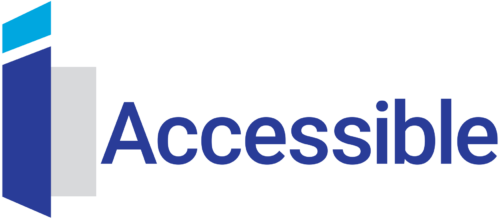Americans With Disabilities Act (ADA)
What Is The Americans With Disabilities Act (ADA)?
In 1990, the ADA was enacted as a civil rights law protecting those with disabilities from discrimination. Since 1990, there have been various updates as the times have changed. It covers topics of employment (I), state and local government services (Title II), public accommodations and commercial facilities (Title III), telecommunications services (Title IV), and miscellaneous provisions (Title V). Although the ADA does not explicitly mention web accessibility standards, in September 2018, the US Department of justice released a statement saying:
The Department first articulated its interpretation that the ADA applies to public accommodations’ websites over 20 years ago. This interpretation is consistent with the ADA’s title III requirement that the goods, services, privileges, or activities provided by places of public accommodation be equally accessible to people with disabilities.
The statement goes on to read that there is flexibility in what is considered compliant, which implies expensive approaches, such as 24/7 telephone support. However, it is widely known that congress is taking an active approach in determining web accessibility, leading to speculation that explicit instructions will be released at any time, especially as web accessibility lawsuits continue to pile up.
Why Does It Matter?
According to the United States Census Bureau, nearly 1 in 5 Americans have a mental or physical disability. Consequently, 90% of public websites do not meet ADA standards. This means that businesses are ignoring the inherent and legal rights of those with disabilities, while limiting their consumer base. However, the most important reason it matters is because we should all strive to ensure equal opportunities for all, including those with disabilities, and in today’s digital age, web accessibility is a key component of that equal opportunity.
Web Accessibility vs. Other Options
As mentioned in the US Department of Justice’s 2018 statement, there are other options of compliance if the opportunities remain the same. Considering websites are available 24/7, alternative option would have to immediately meet this standard. One option is the costly expense of hiring additional staff and funding the additional man hours to achieve 24/7 support. Another option could be to automate a 24-hour support system to cut down on the expensive of staffing. This path includes significant software development and may still struggle to meet the wide range of disabilities, for instance those with hearing or mobility impairments.
On the other hand, web accessibility is much cheaper in the long term. It is also more inclusive to the wide range of disabilities thanks to software and hardware already in existence for these purposes. Integrating a tool like iAccessible allows companies to quickly identify where their web accessibility errors are for quick and accurate remediations. Thanks to the iAccessible’s automation component, it will continue to provide support by automatically scanning your website, reviewing both new and old content to aid in continuous compliance.
What Role Does iAccessible Play?
One of the biggest challenges for webmasters is to scour countless webpages to identify where and how their website is not ADA compliant. iAccessible recognizes this challenge by automating the process using the Web Content Accessibility Guidelines (WCAG) as its standard. WCAG is the standard for web accessibility throughout the world. In using iAccessible, your webpages can be completely scanned, looking for compliance issues within WCAG standards on predetermined dates, or by using iAccessible’s Ad Hoc service to easily scan an updated page in real time. By using iAccessible, your company will have the ability to identify WCAG violations for remediation, aiding you on the path towards compliance, and ultimately helping to protect your company from legal action regarding web accessibility. It also allows your company to take pride in knowing it is taking a proactive approach in providing equal web accessibility to all!
